Abstract
Mickelson, M. N. (National Animal Disease Laboratory, Ames, Iowa). Chemically defined medium for growth of Streptococcus pyogenes. J. Bacteriol. 88:158–164. 1964.—Three strains of group A hemolytic streptococci representing three serological types were serially subcultured for an extended period (100 or more transfers) in a peptide-free and protein-free culture medium. An amino acid assay medium, modified by addition of small amounts of glutamine, ammonium acetate, and 0.1 m phosphate (pH 7), was used. In this medium, high concentrations of glutamic acid or glutamine were required, and biotin was stimulatory to growth. Biotin could be partially replaced with NaHCO3. Maximal growth was obtained with NaHCO3 when biotin was present, and aspartic acid and asparagine were omitted from the medium. In 24 to 48 hr of incubation at 37 C, luxuriant growth was obtained with complete removal and quantitative fermentation of 1% glucose to lactic acid. Optical densities of cultures were equivalent to those obtained with the best infusion media.
Full text
PDF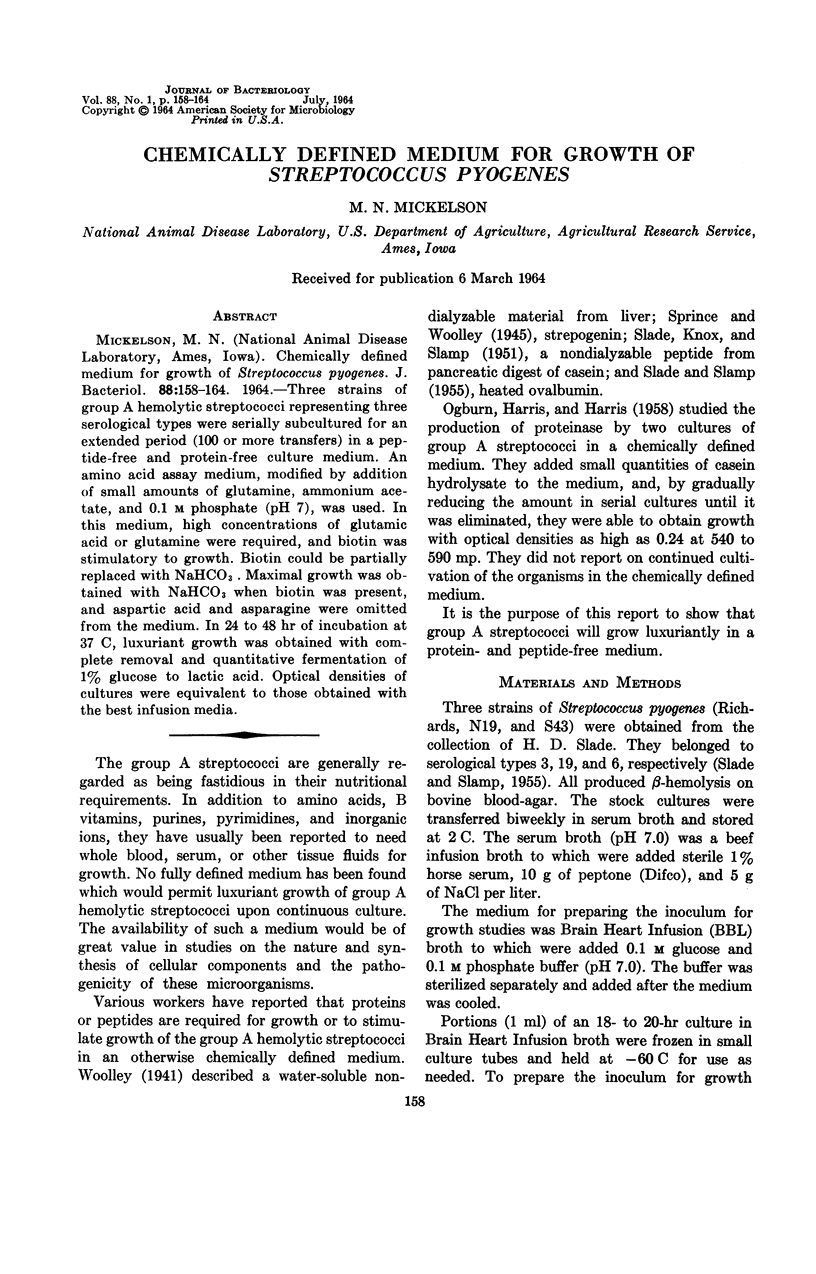
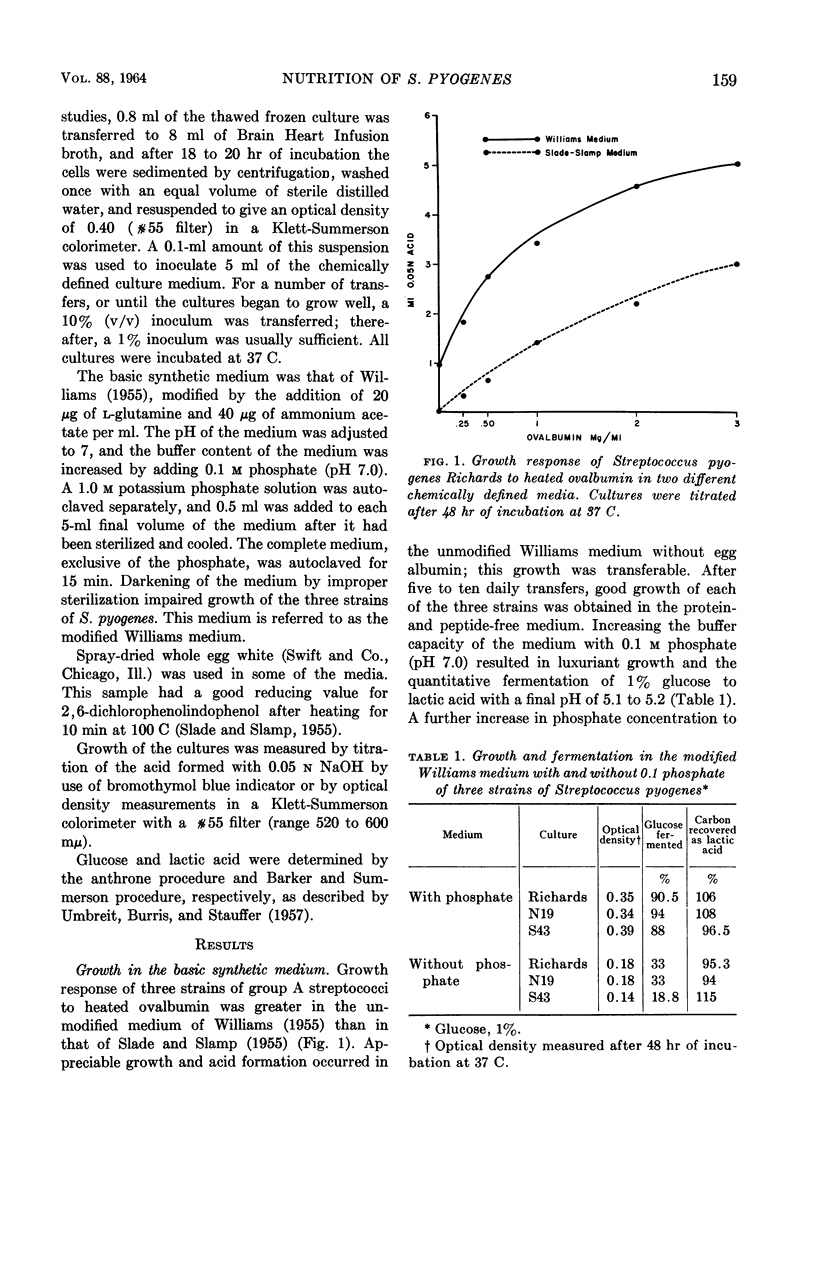
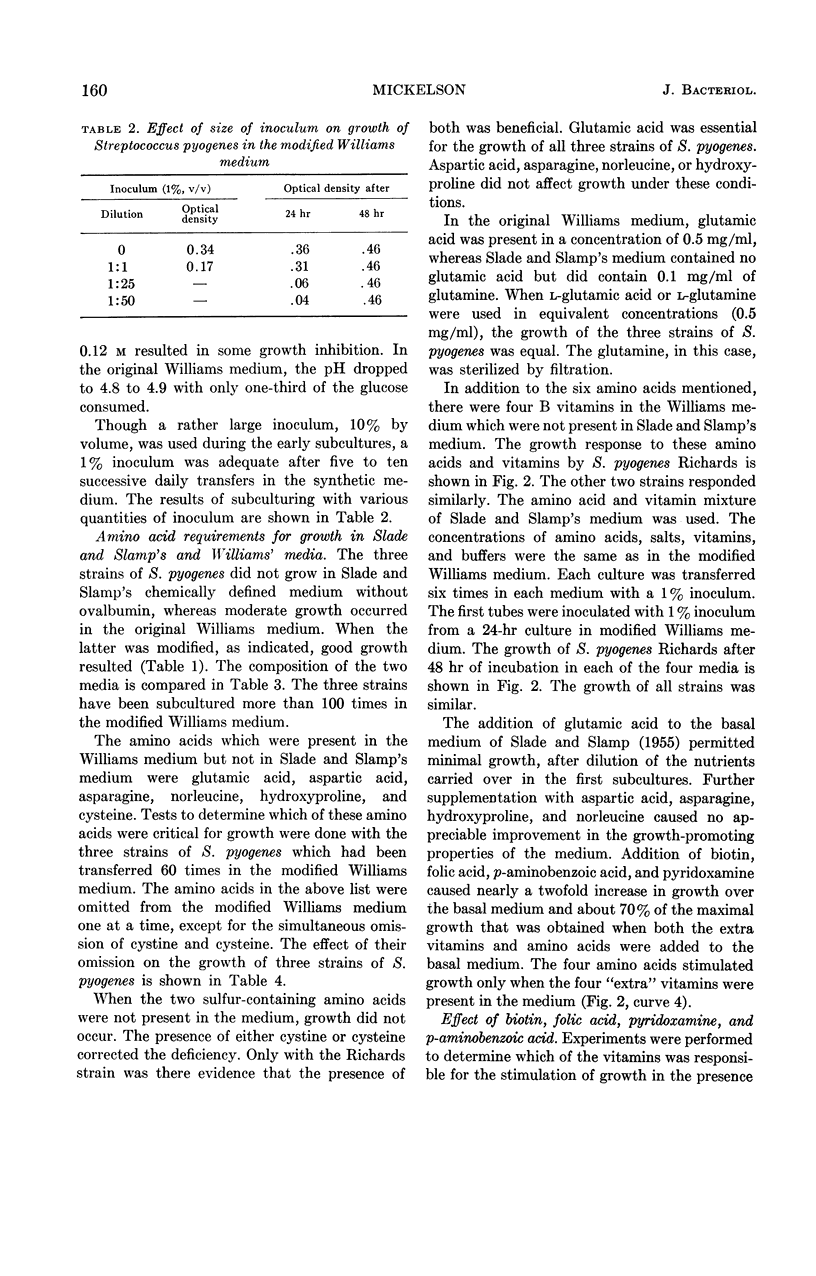
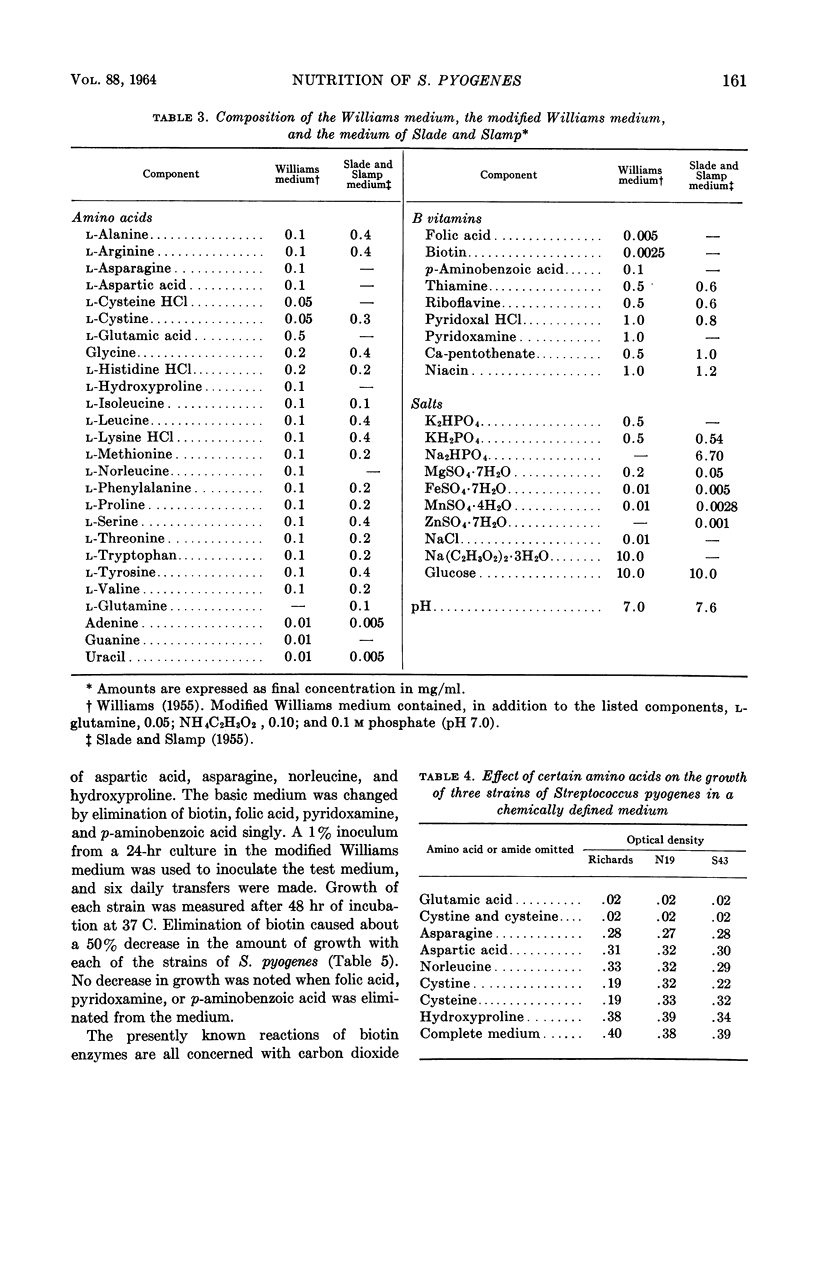
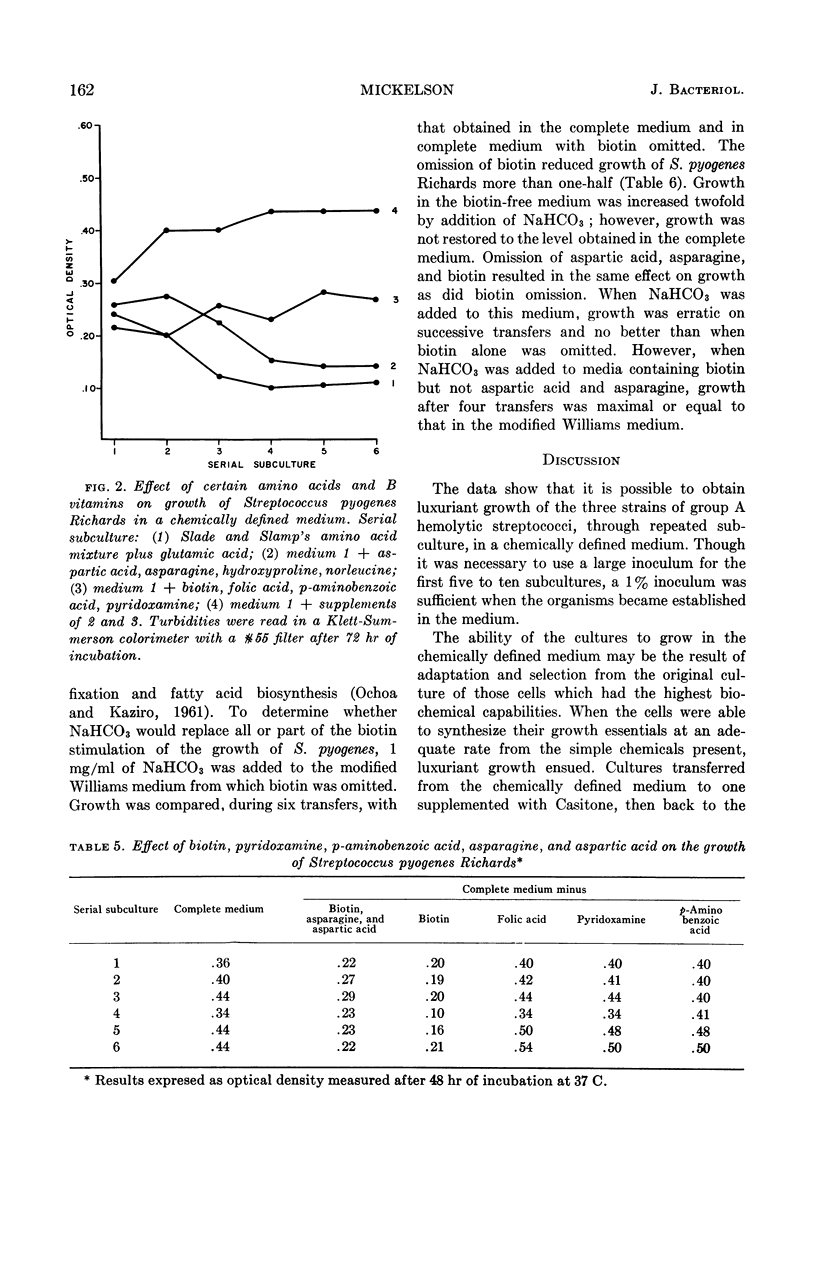
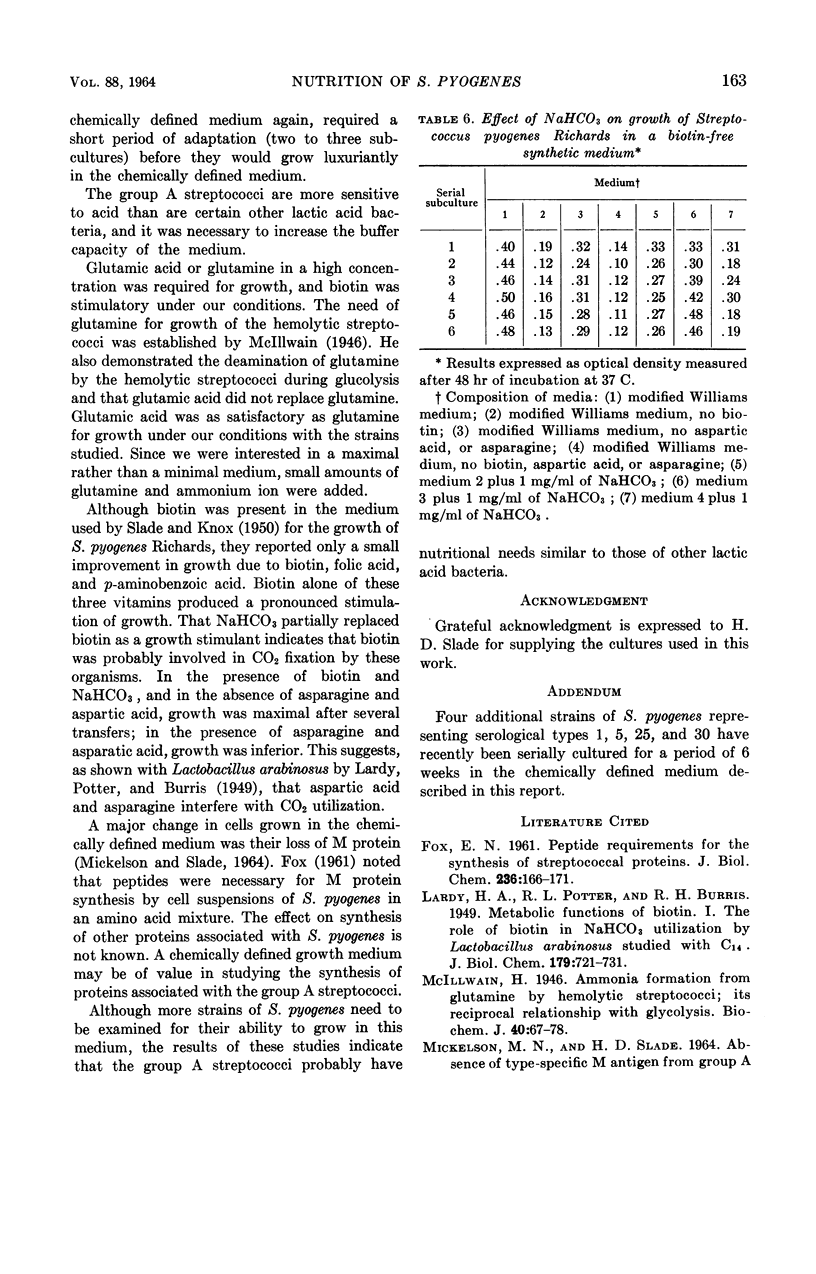
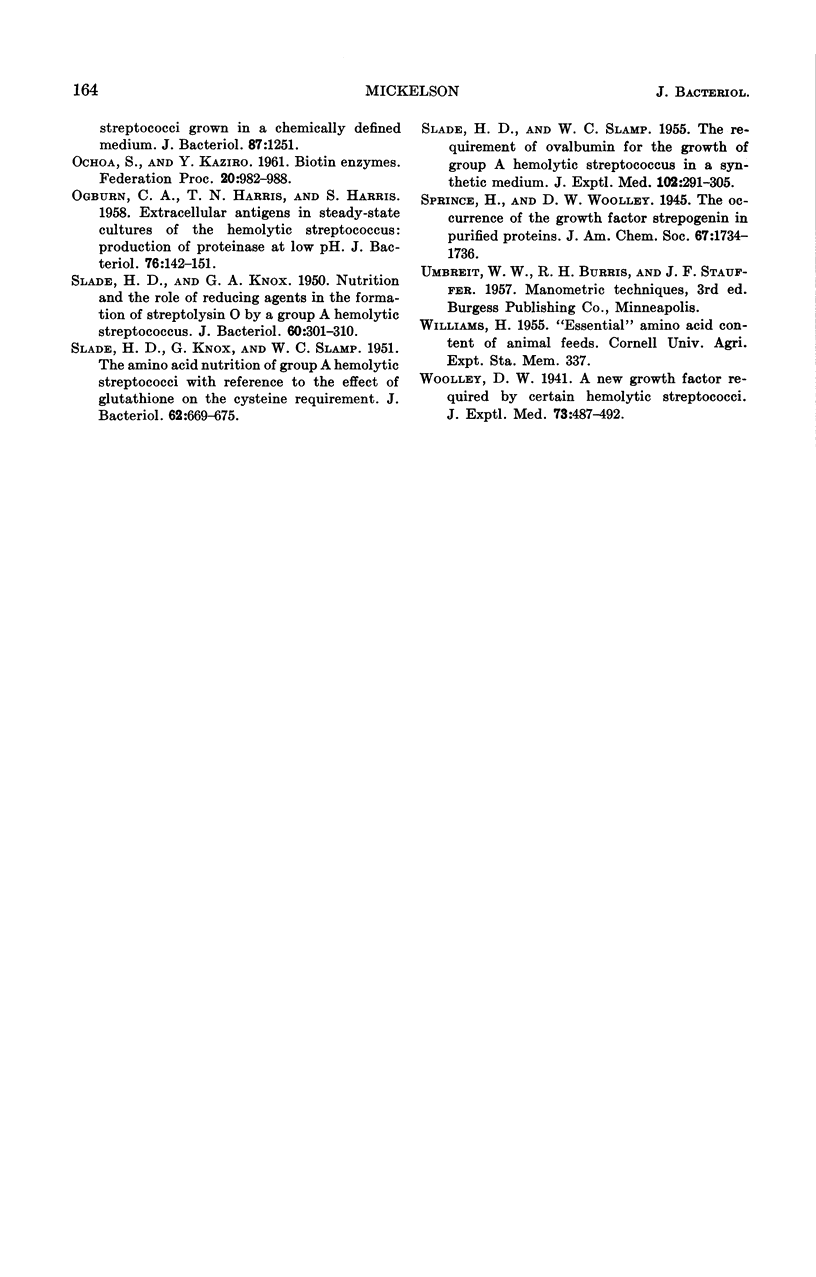
Selected References
These references are in PubMed. This may not be the complete list of references from this article.
- FOX E. N. Peptide requirements for the synthesis of streptococcal proteins. J Biol Chem. 1961 Jan;236:166–171. [PubMed] [Google Scholar]
- McIlwain H. The metabolism and functioning of vitamin-like compounds: 1. Ammonia formation from glutamine by haemolytic streptococci; its reciprocal connexion with glycolysis. Biochem J. 1946;40(1):67–78. [PMC free article] [PubMed] [Google Scholar]
- Mickelson M. N., Slade H. D. Absence of type specific M antigen from group A streptococci grown in a chemically defined medium. J Bacteriol. 1964 May;87(5):1251–1251. doi: 10.1128/jb.87.5.1251-.1964. [DOI] [PMC free article] [PubMed] [Google Scholar]
- OCHOA S., KAZIRO Y. Biotin enzymes. Fed Proc. 1961 Dec;20:982–988. [PubMed] [Google Scholar]
- OGBURN C. A., HARRIS T. N., HARRIS S. Extracellular antigens in steady-state cultures of the hemolytic Streptococcus: production of proteinase at low pH. J Bacteriol. 1958 Aug;76(2):142–151. doi: 10.1128/jb.76.2.142-151.1958. [DOI] [PMC free article] [PubMed] [Google Scholar]
- SLADE H. D., KNOX G. A. Nutrition and the role of reducing agents in the formation of streptolysin O by a group A hemolytic streptococcus. J Bacteriol. 1950 Sep;60(3):301–310. doi: 10.1128/jb.60.3.301-310.1950. [DOI] [PMC free article] [PubMed] [Google Scholar]
- SLADE H. D., KNOX G. A., SLAMP W. C. The amino acid nutrition of group A hemolytic Streptococci, with reference to the effect of glutathione on the cystine requirement. J Bacteriol. 1951 Nov;62(5):669–675. doi: 10.1128/jb.62.5.669-675.1951. [DOI] [PMC free article] [PubMed] [Google Scholar]
- SLADE H. D., SLAMP W. C. The requirement of ovalbumin for the growth of group A hemolytic Streptococcus in a synthetic medium. J Exp Med. 1955 Sep 1;102(3):291–305. doi: 10.1084/jem.102.3.291. [DOI] [PMC free article] [PubMed] [Google Scholar]


